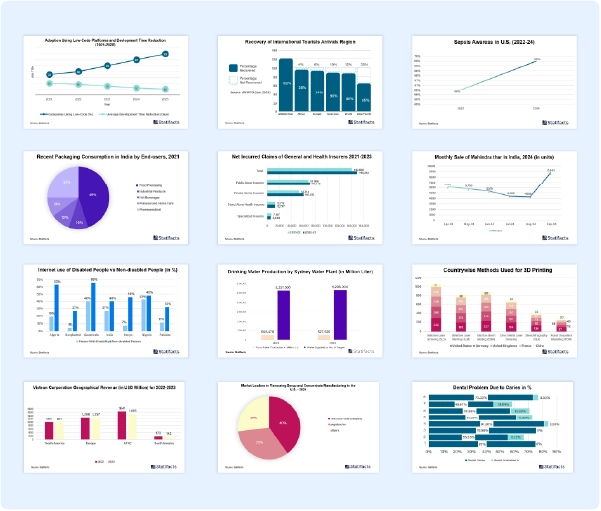The U.S. ovarian cancer diagnostics market size was estimated at USD 2,109 million in 2024 and is expected to be worth around USD 3,092 million by 2034, growing at a compound annual growth rate (CAGR) of 3.9% over the forecast period 2025 to 2034.
U.S. Ovarian Cancer Diagnostics Market Report Highlights
- The epithelial tumor held the largest market revenue for the U.S. ovarian cancer diagnostics market in 2024.
- The imaging segment held the largest market revenue share in 2024.
- The biopsy technologies segment is expected to grow significantly during the forecast period.
- The hospital laboratories end-use segment held the highest market revenue share for the U.S. ovarian cancer diagnostics market in 2024.
- The cancer diagnostic centers are expected to grow significantly during the forecast period.
The U.S. ovarian cancer diagnostics market refers to the production, distribution, and application of ovarian cancer diagnostics, which are instruments are medical tools used to detect and diagnose ovarian cancer, including tissue sampling techniques (biopsy, laparoscopy), blood tests (CA-125, HE4), and imaging devices (like ultrasound and MRI). The most commonly used tests for the detection of ovarian cancer includes transvaginal ultrasound (TVU) and serum CA-125). Ovarian cancer may be diagnosed in advanced stage due to the lack of specific symptoms associated with early-stage disease. A tissue biopsy is the only thing that can definitively confirm ovarian cancer diagnosis. Ovarian cancer is when abnormal cells in the ovary, ovarian tube, or peritoneum begin to grow and divide in an uncontrolled way. A surgical biopsy is the only definitive way to diagnose ovarian cancer. Ultrasound is usually the first diagnostic test conducted by healthcare providers before treatment for any ovary-related disease or disorder is administered. It can be used to find an ovarian tumor and to check if it is a solid mass or a fluid-filled fluid.
Rising incidences of ovarian cancer are contributing to the growth of the U.S. ovarian cancer diagnostics market. Early detection of ovarian cancer may reduce mortality by 10-30%. Between 5 to 15 out of 100 ovarian cancers (5 to 15%) are caused by an inherited faulty gene. Inherited genes that increase the risk of ovarian cancer include faulty versions of BRCA1 and BRCA2. Faults in these genes also increase the risk of breast cancer. A tissue biopsy is the only thing that can definitively confirm an ovarian cancer diagnosis. Initial ovarian cancer diagnosis is often found based on symptoms like pelvic pain, abdominal distension, weight loss, fatigue, bloating, and feeling full quickly. TVU is the most common imaging modality employed for detecting ovarian cancer and allows clinicians to identify irregularities in the size and shape of ovarian tissues.
The growing adoption of advanced diagnostics technologies is driving the growth of the U.S. ovarian cancer diagnostics market. Advancements in ovarian cancer diagnostics have led to a major shift in ovarian cancer treatment and management, concentrating on targeted drug delivery systems to improve treatment efficiency and accuracy while minimizing adverse effects. A vast array of molecular biopsy techniques has been developed for cancer diagnosis and subtyping, like flow cytometry, immunofluorescence, immunohistochemistry, and DNA and RNA-based hybridization/sequencing approaches. Advanced technology adoption in ovarian cancer diagnostics provides advanced tools to enhance patient care. The benefits of investing in advanced technology include providing access to the amount of data and powerful analytics tools and atomization and digitalization of processes to reduce manual errors, improve accuracy, and speed up operations.
Rising awareness around women’s health, especially in terms of reproductive health, has led to more ovarian cancer screenings, driving the growth of the U.S. ovarian cancer diagnostics market. Ovarian cancer does not cause many symptoms in the early stages, which is why the majority of cases are of advanced diseases. The increasing awareness of ovarian cancer symptoms may lead to earlier diagnosis and improved outcomes. Early detection can enhance survival rates, as treatment can be started early before the cancer has a chance to spread. This is mainly true for cancers that are aggressive and have a likelihood of spreading, such as lung and pancreatic cancer. The sooner ovarian cancer is diagnosed, the better the patient's prognosis will be.
The integration of artificial intelligence and machine learning algorithms with ovarian cancer diagnostics is driving one of the most transformative trends in modern medicine. AI can assist in the accurate and rapid analysis of pathology slides, identifying patterns and anomalies that might missed by human eyes. Although regular laboratory test has the potential to be ovarian cancer biomarkers, a single test is yet to provide adequate sensitivity or specificity for ovarian cancer in individuals. AI may help integrate data from many tests to aid diagnosis. Artificial intelligence-based technology brings about many benefits for society and the community, including addressing complex global challenges, assisting in risky tasks, minimizing errors, fostering innovation, and improving process efficiency, which drives the growth of the U.S. ovarian cancer diagnostics market.
Published by
Laxmi Narayan

